
As the garden slowly wakes up after a long winter slumber, the excitement for a whole new gardening season is palpable. The sights and sounds and smells of spring are all around us, and oh how they beckon!
And while we can keep busy with these midwinter garden jobs and a slew of garden-related projects, there’s nothing quite like getting our hands dirty and working the soil.
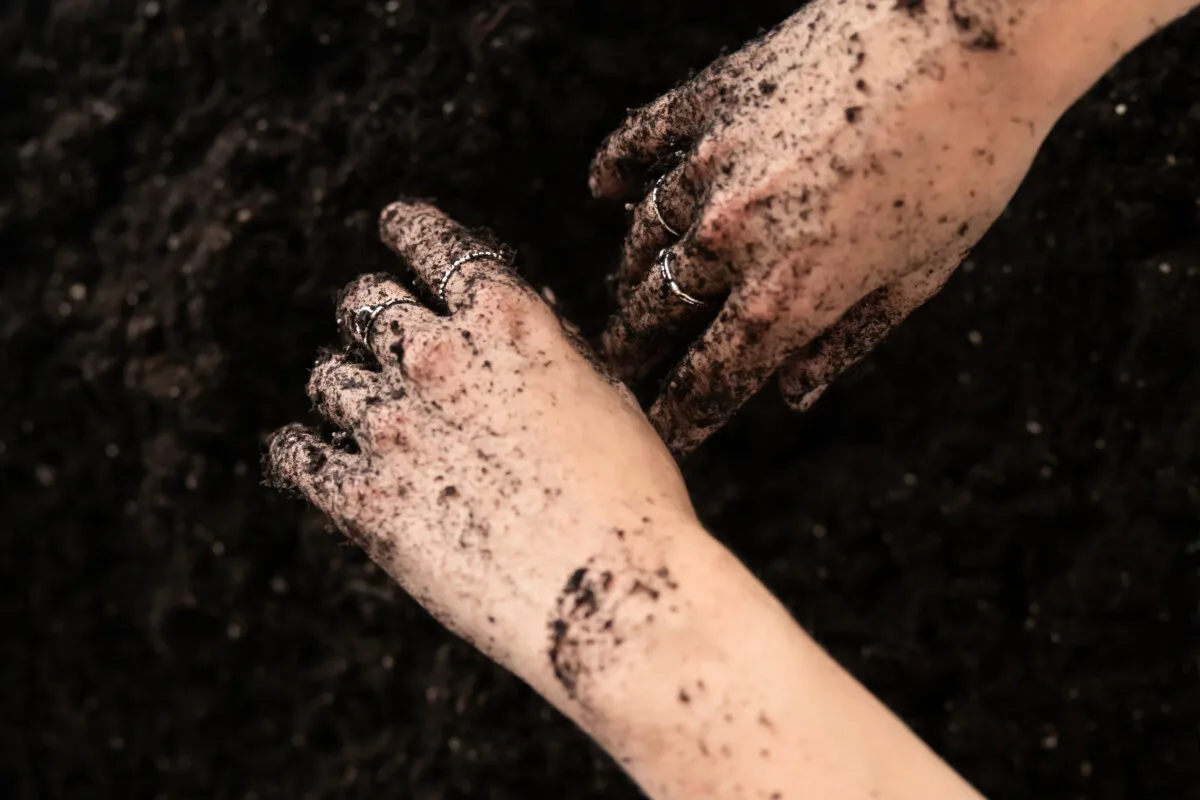
One of the cardinal rules of gardening is to never transplant or sow seeds in the garden before the last frost – or else risk losing your plants during the inevitable last gasp of winter.
This sage advice has one exception: cool season crops.
Unlike warm-season cultivars like tomato, cucumber, pepper, and eggplant that would be wrecked in a cold snap, cool season vegetables are incredibly hardy and don’t mind the cold weather one bit.
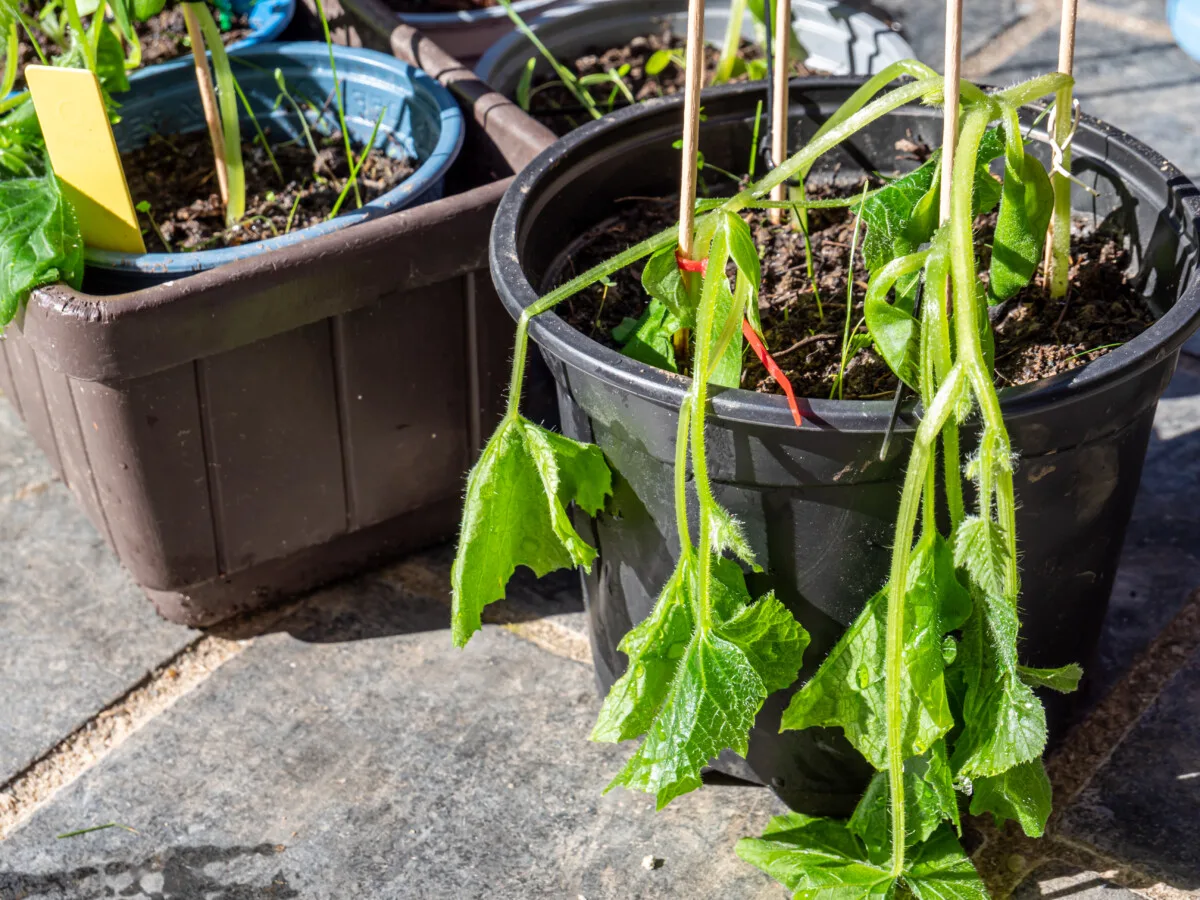
And by giving these spring-loving crops an early start, you should get a sizeable harvest in before the heat of summer causes them to bolt.
When is the Last Frost Date?
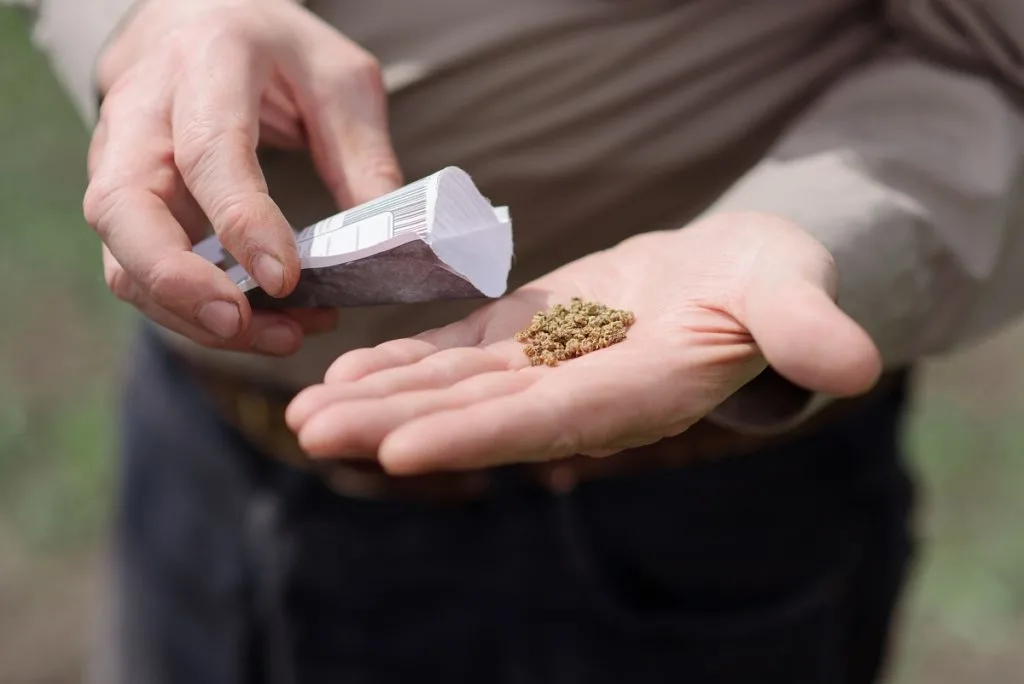
The last frost date in spring (as well as first frost date in fall) varies widely by location. Gardeners in the Deep South can get planting as early as January while those in Mountain States would be better off waiting until June.
To find your average frost dates for your region, use the Old Farmer’s Almanac calculator and search by ZIP code.
Frost dates are based on historical climate data that goes back more than 100 years. Although these records are quite good at predicting the future, there’s no guarantee that a frost won’t occur after the last frost in spring. There is about a 30% chance that frost could strike before or after the given frost dates.
Even though cool season crops have a heightened tolerance to cold temperatures, they are not invulnerable to a deep freeze. Keep some garden cloches or floating row covers on hand in case a hard frost extends for several days in a row. It never hurts to be prepared.
6 Weeks Before the Last Frost:
1. Onion Sets
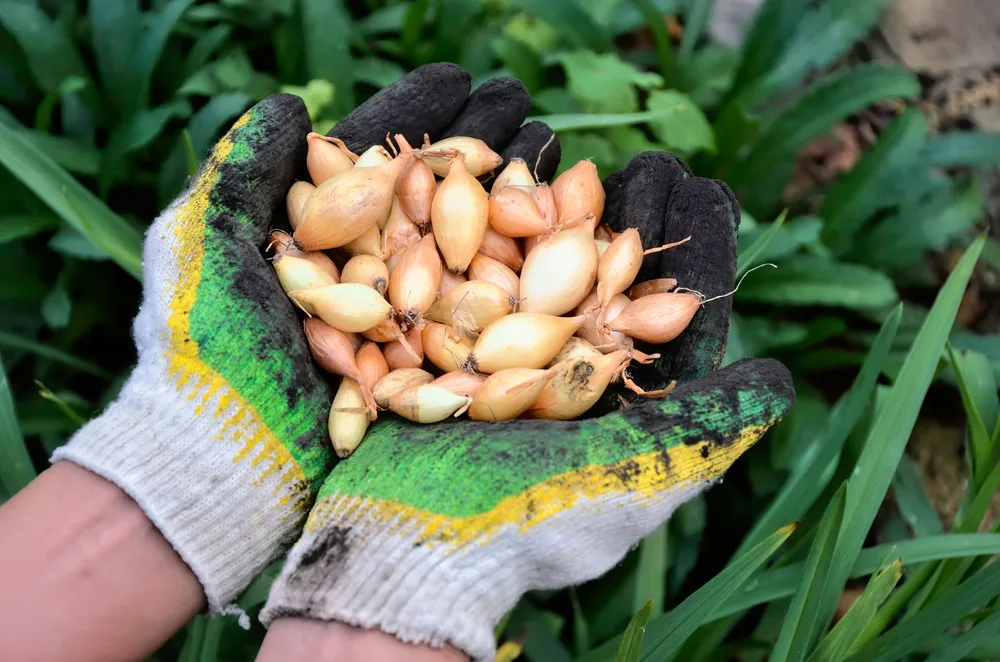
Onions are a frost hardy vegetable that can be started indoors from seed about six weeks before the last frost.
Onion sets, however, offer a considerable head start on the season since they can be planted out in the garden as soon as the soil can be worked in spring.
Onion sets are small and immature onion bulbs that were grown from seed the season before. Each bulb is about a half-inch in size. These mini onions are dried for storage and are available at most garden centers by the bag.
Since they will be in their second year of growth when planted, onion sets often produce larger, more flavorful onions.
Safe to go in the garden even as temperatures dip to 21°F (-6°C), onions will grow most vigorously when the weather warms to 55°F to 75°F (12°C to 23°C).
Push onion sets into moistened soil no more than 1 inch deep. Make sure the top of the onion is barely poking its tip out of the soil.
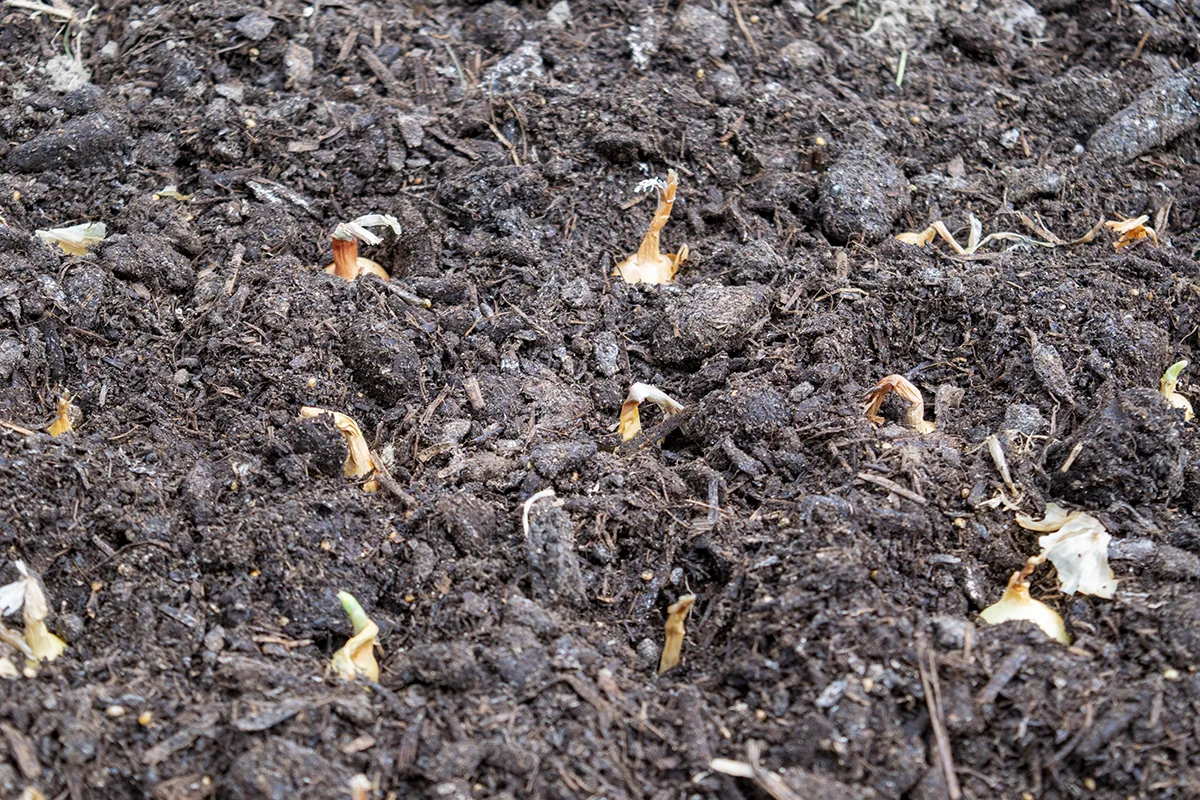
Space bulbs 5 to 6 inches apart with 12 to 18 inches between rows.
2. Lettuce
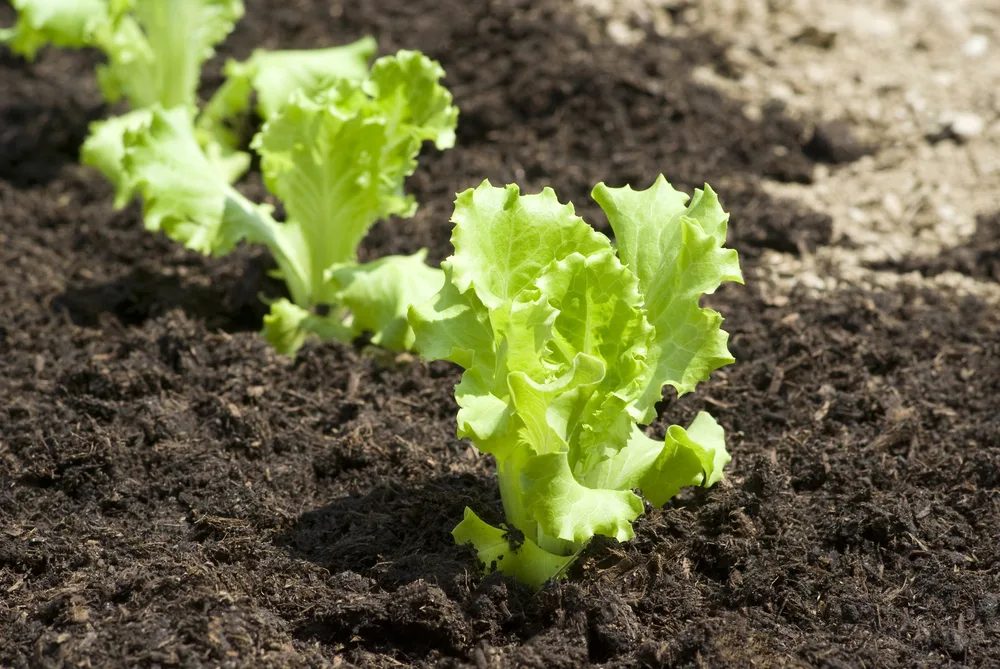
Lettuce prefers the cool and moist conditions of early spring.
Once the soil has warmed to 40°F (4°C) and above, lettuce seeds can be direct sown into the garden.
Use seed tape to achieve the perfect plant spacing. Or, sow them the old fashioned way by sprinkling the tiny seeds along the surface of ground and covering with a thin layer soil, no more than a ¼ inch deep.
Once the seedlings are a few inches tall and have a set of true leaves, thin them out according to the lettuce type.
Head lettuce varieties need spacing 6 to 12 inches apart. Leaf lettuce can be thinned to 4 to 6 inches apart. Romaine and butterhead types need 6 to 8 inch spacing. And baby lettuce varieties can be planted more densely, about 30 seedlings per square foot.
Lettuce plants grow best in temperatures between 45°F and 65°F (7°C to 18°) so it’s a smart bet to get those seeds in the soil as quickly as possible.
Sow lettuce seeds every two weeks throughout spring for successive harvests.
3. Kohlrabi
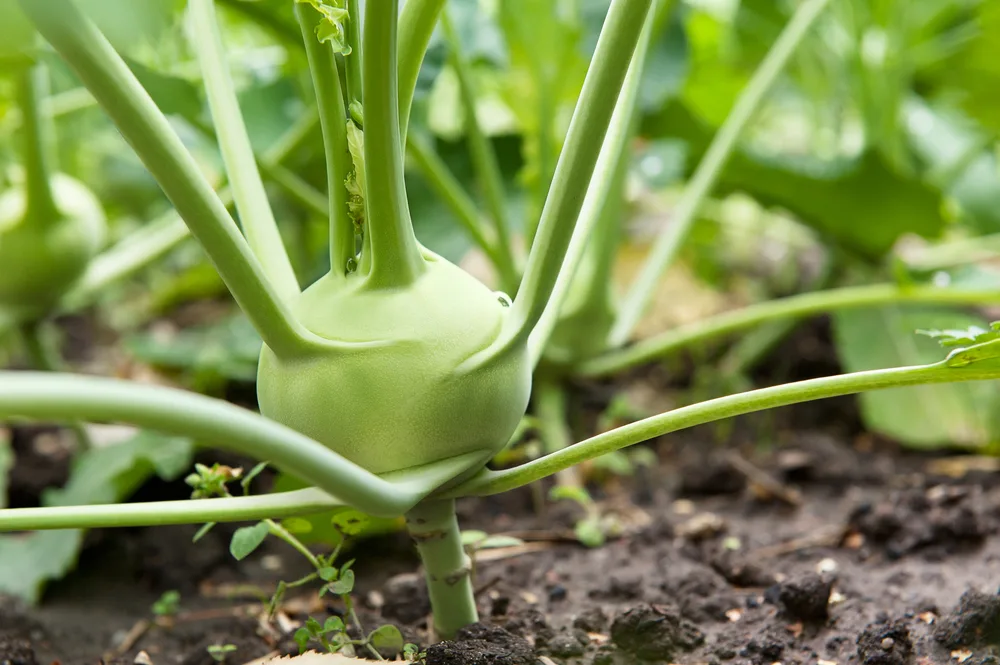
Kohlrabi – or cabbage turnip in the German tongue – is a cold hardy biennial vegetable that produces edible green leaves above and a crisp, juicy, and mildly sweet bulb below.
Like other members of the Brassica family, kohlrabi performs best in cooler conditions. Kohlrabi seeds will readily germinate once soil temperatures are at least 45°F (7°C).
Plant kohlrabi seeds ¼ inch deep and 5 inches apart, with one foot between rows.
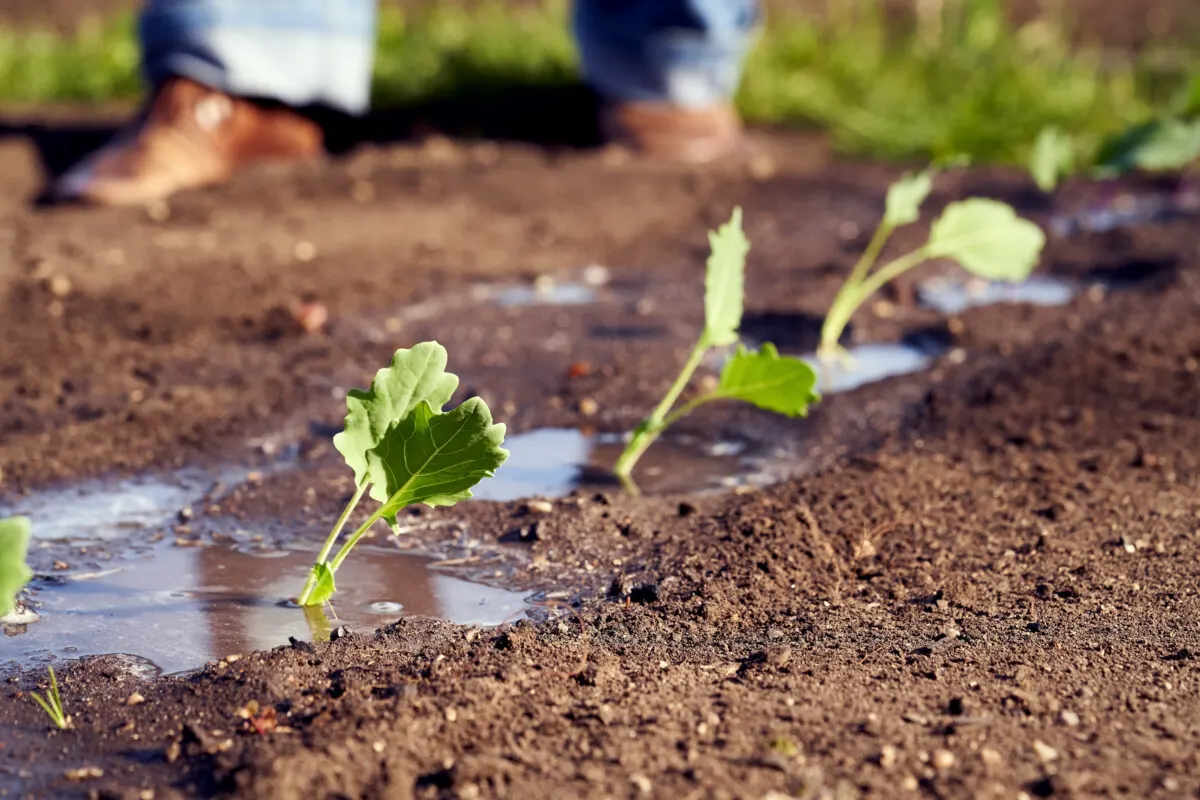
Although kohlrabi’s bulbous base looks like a root vegetable, this is actually the stem. It sits atop of the soil and swells in size as it matures.
Harvest kohlrabi when the stem is 2 to 3 inches in diameter, roughly 40 days after planting. Don’t let kohlrabi plants get much larger than this as they become tough and woody over time.
4. Parsnips

Parsnip takes around 110 days to mature, so you’ll want to get the seeds in the ground as soon as you can.
Tolerant of cool weather, parsnip seeds can be direct sown in the garden when soil temperatures are 40°F (4°C) and higher.
Loosen and fluff up the soil down to 12 inches or more to give parsnip roots room to grow. Sprinkle seeds along the surface of the plot, covering them with a ½ inch of soil or less.
When seedlings have emerged in 2 to 3 weeks, thin them so plants are 3 to 6 inches apart with 18 inches between rows.
Wait until parsnips have been kissed by frost late in the season before pulling them from the ground for a delectably sweet and nutty parsnip harvest.
5. Kale
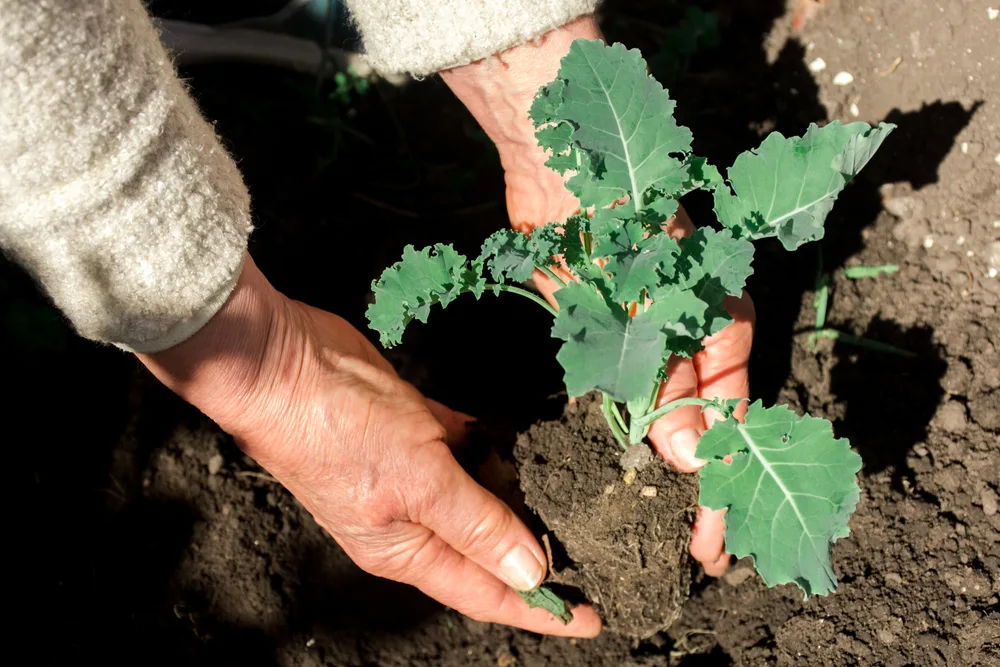
Like a loose-leaf cabbage with wrinkled leaves, kale is a cut-and-come-again crop yielding plenty of nutritious greens in early summer and then again in autumn.
For a spring harvest, kale seeds can be planted in the garden as soon as the soil can be worked.
Full sized kale needs 60 days to mature so an early sowing gives plants a running start on the season before the summer heat causes them to bolt. You can also harvest early for tender baby kale.
Plant kale seeds ¼ inch deep. Thin seedlings after two weeks to 8 to 12 inches apart for full size kale.
For a harvest that extends well into winter, do a second planting of kale about 8 weeks before the first fall frost.
For the sweetest kale leaves, hold off on harvesting your plants until they have been exposed to a hard frost.
6. Radishes
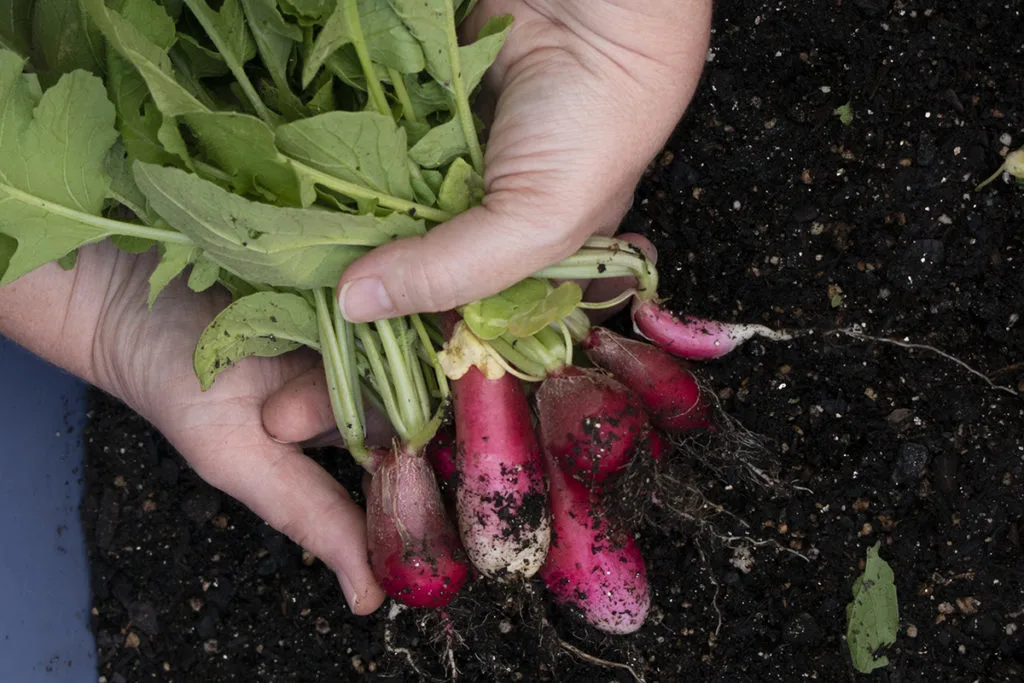
Radish is an amazingly fast grower, maturing from seed to harvest in less than a month.
Sow radish seeds in the garden early, about six weeks before last frost. Keep planting seeds every 10 days for continuous radish harvests all the way until early summer.
Plant radish seeds ½ inch deep, 2 to 3 inches apart. Allow about 12 inches of space between rows.
Once the radish plants are spent in midsummer, plan on a second planting in autumn by sowing seeds 6 weeks before the first fall frost.
7. Spinach
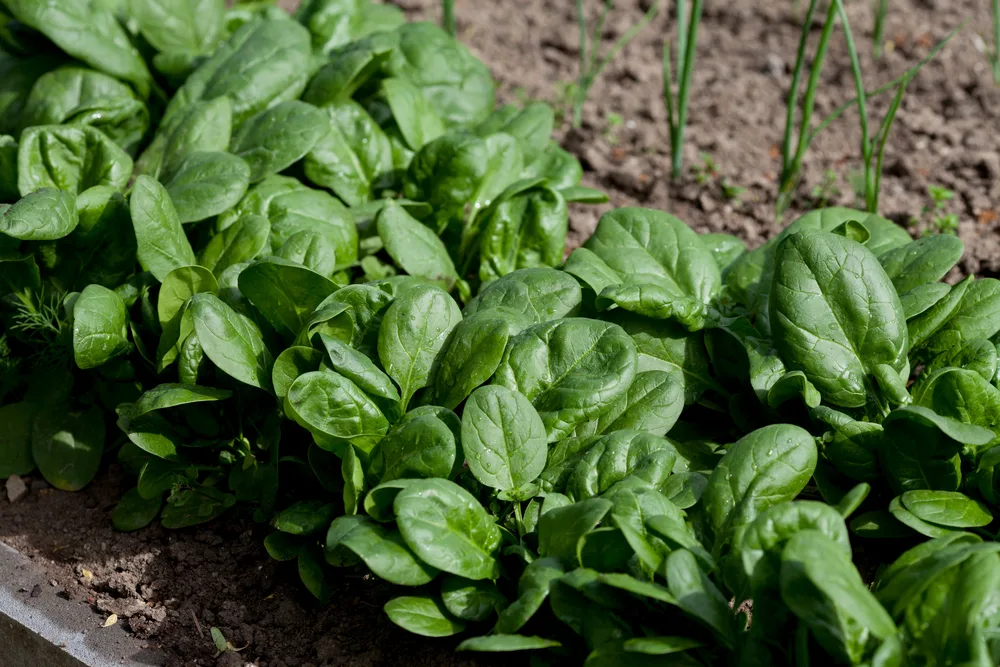
Spinach needs six weeks of cool weather to develop from seed to leafy greens.
Setting out your spinach seeds in the garden early means you could be enjoying your first harvest just as your warm season crops are getting planted in the ground.
Once the soil is thawed and workable, sow spinach seeds a ½ inch deep. Plant a dozen seeds per foot, thinning them to 3 to 4 inches apart when plants are 2 inches tall.
At the time of sowing, soil temperatures should be about 40°F (4°C).
Once seedlings are established, spinach plants thrive as temperatures rise between 50°F to 70°F (10°C to 21°C).
Sow more spinach seeds every two weeks in spring for to get a hefty harvest in before the days become too long and too hot.
8. Arugula
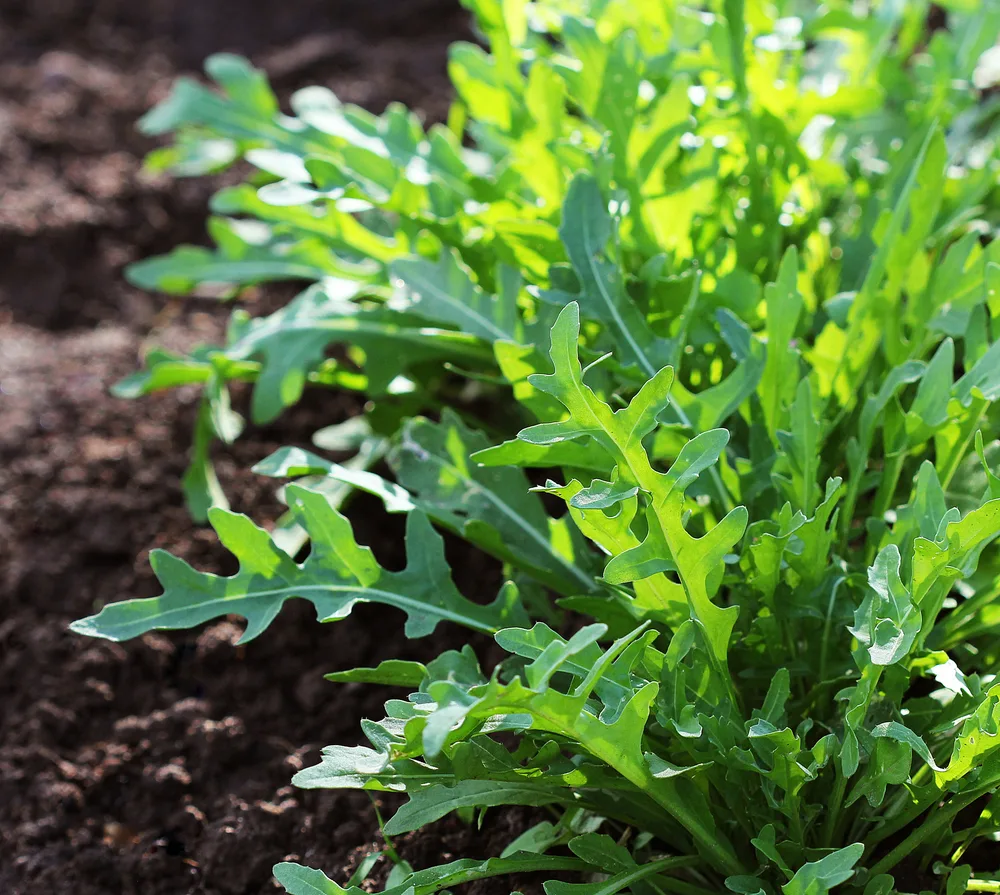
The bold and tangy leafy green, arugula is made even sweeter when grown in cooler conditions.
Arugula seeds will germinate in soil temperatures as low as 40°F (4°C) and young plants are capable of surviving a light frost.
Sow arugula seeds in the garden to a depth of a ¼ inch with rows 10 inches apart. Thin out seedlings so plants are spaced 6 inches apart.
These cool season greens will grow most rapidly when temperatures warm to 45°F to 60°F (10°C to 18°C).
Arugula is ready to be harvested in 6 to 8 weeks. Pick the younger leaves for a milder taste sensation or the larger ones for a more pungent and spicy experience.
4 Weeks Before the Last Frost
9. Mustard
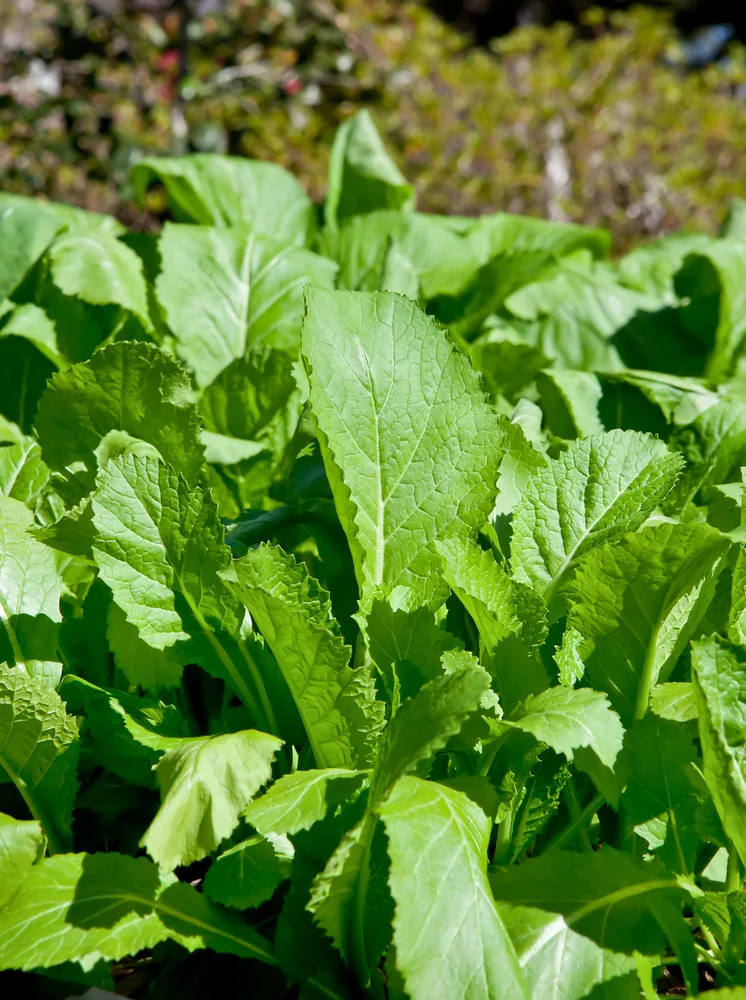
Mustard is a versatile little plant and great all-round provider in the garden.
Grown for its edible leaves, mustard greens have a wonderful bite to them and are an invigorating addition to the usual salad mixes. Harvest these early and often throughout the growing season.
Let your mustard plants flower over the summer to take in their pretty yellow blooms, and in the meantime they will attract a fair share of beneficial insects and pollinators. Mustard’s fragrant leaves are also good a repelling garden pests.
Mustard flowers eventually bear seed, the pungent spice used for mustard making. Allowing it to bolt also means you’ll only need to plant mustard once, as it will self-seed each year.
When the season draws to a close, turn the mustard plot over to enrich the soil with green manure.
And because mustard is part of the Brassica family, it can get an early start in the garden too.
Plant mustard seeds up to 4 weeks before the last frost. Space seeds 4 to 6 inches apart with 2 feet between rows.
10. Beets
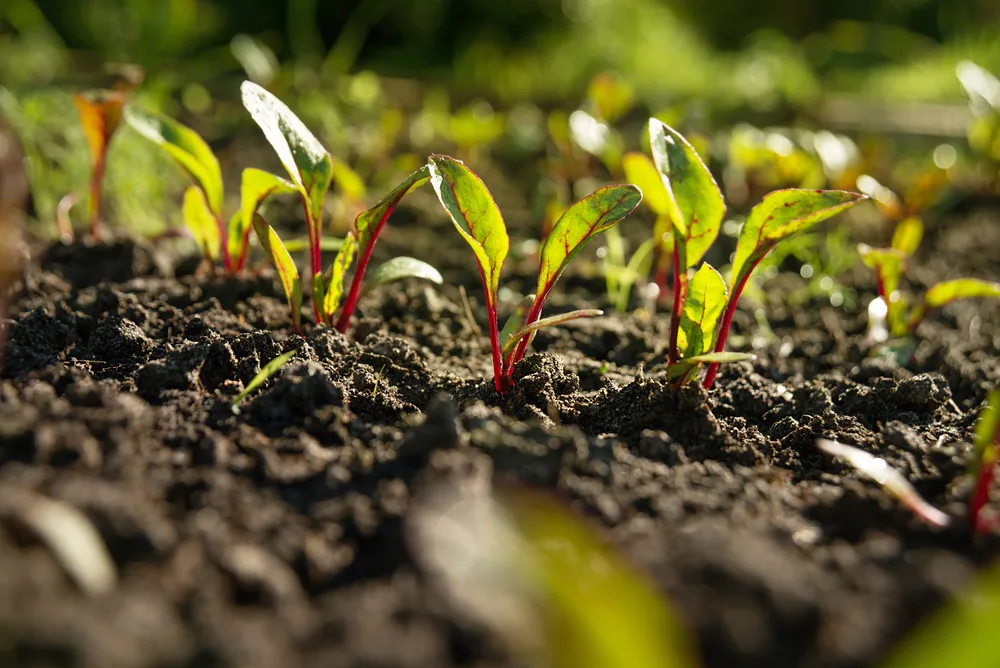
Beets are a vibrant, nutritious, and cold hardy vegetable that are quite forgiving when exposed to light frost in spring.
You can direct sow beet seeds into the garden as soon as the ground has thawed and they will survive near-freezing temperatures.
Soak seeds in water for 24 hours to speed up the germination process. Beet seeds can be planted when soil temperatures are 41°F (5°C), but will germinate faster at 50°F (10°C) and above.
Plant beet seeds ½ inch deep, 1 to 2 inches apart, with 12 inches of spacing between rows.
Keep the soil evenly moist while waiting for your beet seedlings to poke up through the soil.
Thin seedlings when they are 4 inches tall to 3 to 4 inches apart.
Sow a new batch of beet seeds every 2 to 3 weeks until mid-summer for multiple harvests. You can even sow beet seeds in the fall.
11. Swiss Chard
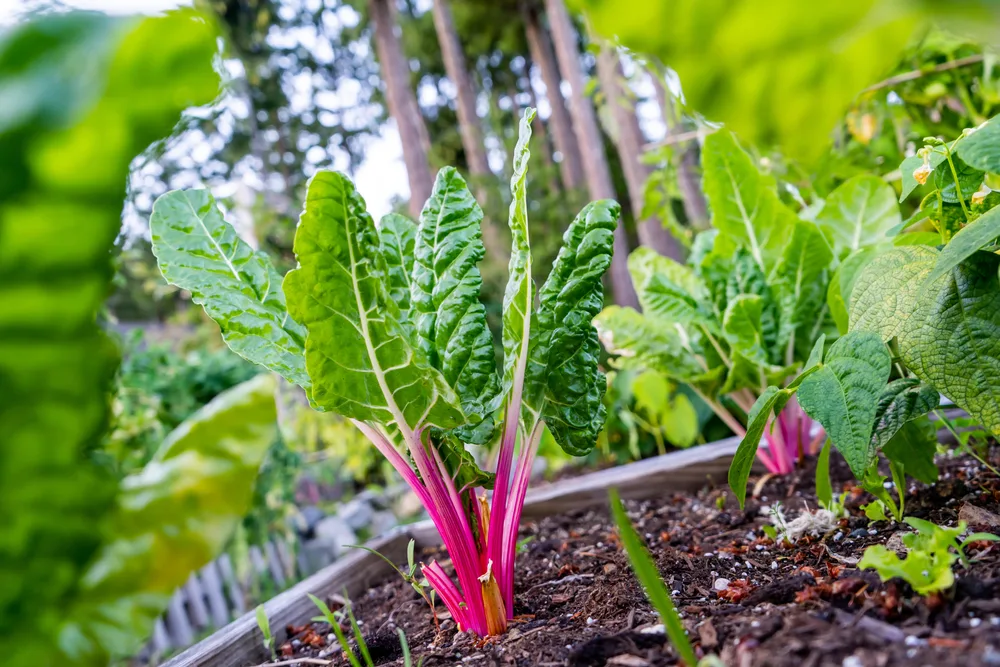
Swiss chard is one of the few leafy greens that are tolerant of long and hot summer days. Its growth will slow in hotter temperatures but perk back up as the weather cools down in autumn.
Even though it can take the heat, Swiss chard is a definitely cool season vegetable that appreciates an early sowing. These plants are happiest in 70°F (21°C) and below.
Plant Swiss chard seeds in the garden when soil is at least 50°F (10°C). Sow seeds a ½ inch deep, 2 to 6 inches apart, with 18 inches between rows.
When seedlings are 4 inches tall, thin plants to 4 to 6 inches apart (for many smaller plants) or 6 to 12 inches apart (for fewer large plants).
A cut-and-come-again crop, harvest outer Swiss chard leaves through spring, summer, and fall to keep plants continuously productive.
12. Broccoli
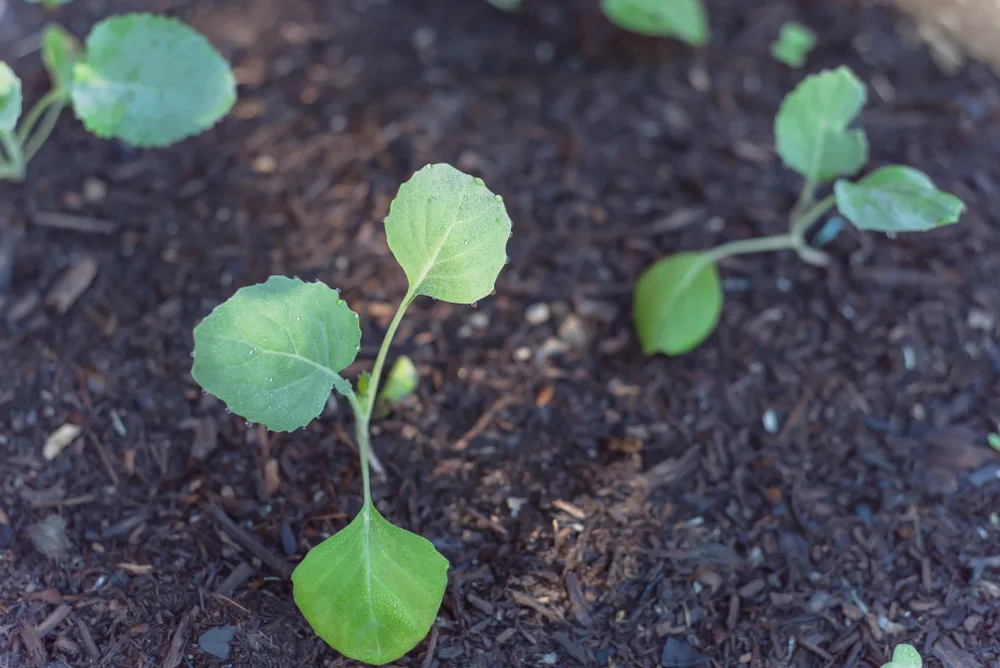
Broccoli can take a long time to reach maturity – around 100 days to harvest – and you’ll want to give them as much time to grow before they bolt in summer.
Although broccoli seeds will sprout in early spring when soil temperatures are as low as 40°F (4°C), they will germinate better in 50°F (10°C) and higher.
Sow broccoli seeds a ½ inch deep, with 3 inches between plantings. Once seedlings are 3 inches tall, thin them to at least 12 inches apart. Give broccoli lots of space to develop by keeping rows about 3 feet apart.
Broccoli heads are best harvested when firm, right before they begin to flower.
As you wait for your broccoli plants to grow, pick some of the broccoli leaves for a tasty and nutritious salad green.
2 Weeks Before the Last Frost
13. Carrots
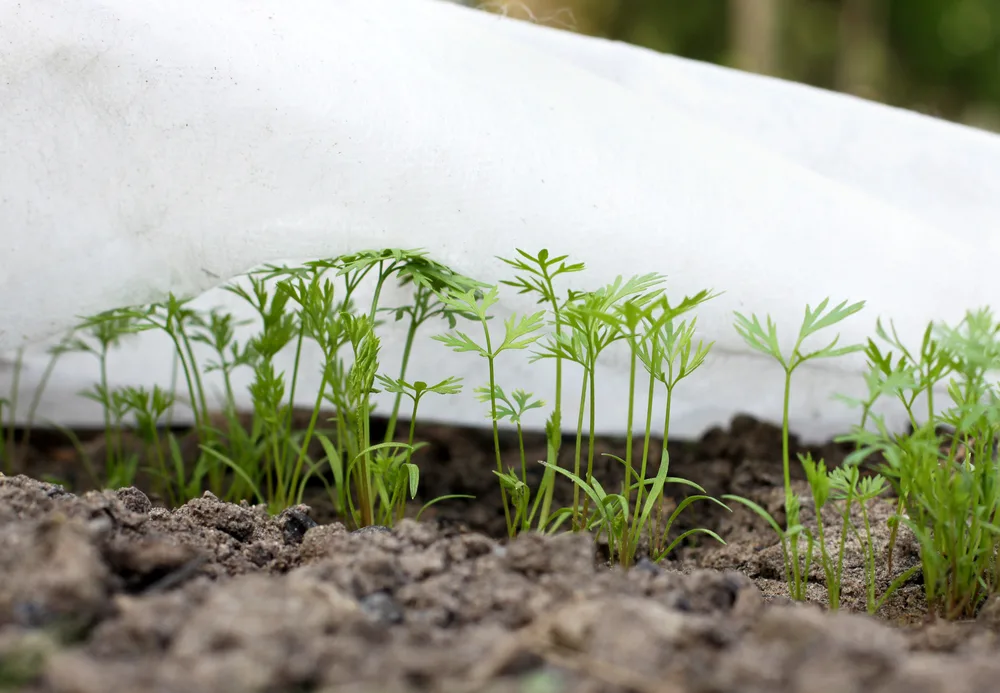
Sweet and crunchy and good for the eyes, carrots are another vegetable that grows best before the temperatures get too warm.
Once established, carrot plants are most productive when daytime temperatures average 75°F (24°C). Consider mulching around the carrots to help keep the growing taproots cooler.
Direct sown carrot seeds will germinate once soil temperatures have reached 55°F (13°C) or more.
Plant carrot seeds 1 inch apart with 15 inches between rows and lightly cover them with soil to 1/8 inch deep. It’s easier to plant carrots using seed tape. Thin seedlings to 2 inches apart when they are about an inch in height.
Keep on top of the thinning and watering schedule and you’ll have perfectly formed carrots in 75 days or less.
14. Peas
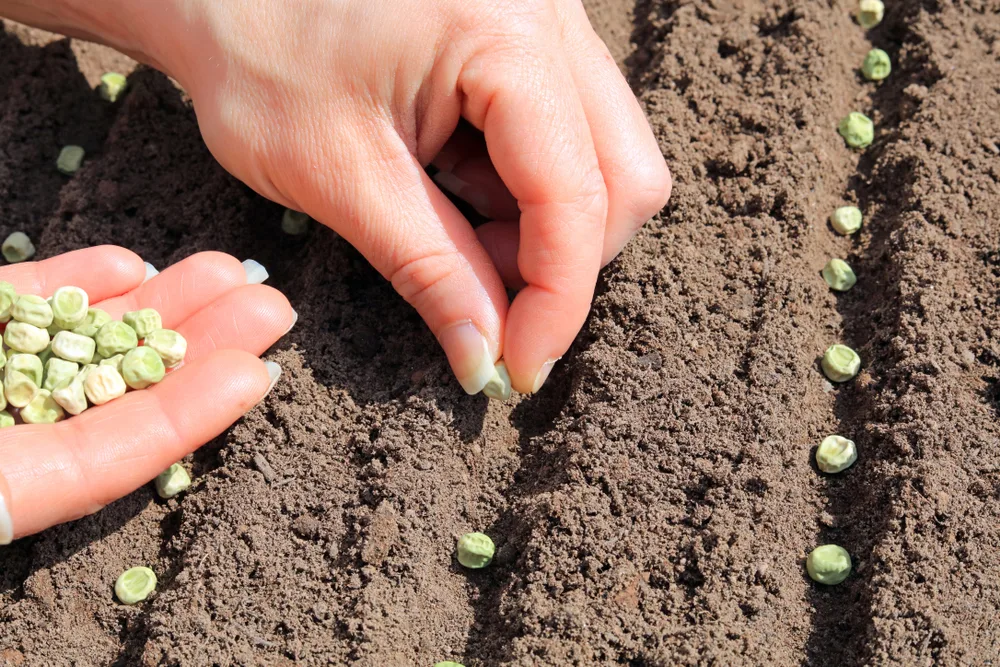
Given its nitrogen fixing qualities, it’s a good idea to get your peas in the soil as soon as you can.
And thankfully peas oblige an early planting and aren’t bothered by cooler conditions.
Pea seeds will germinate at 40°F (7°C), though it will be slower. Once soil temperatures rise to 60°F (16°C) and above, peas will sprout much faster.
Plant pea seeds 1 inch deep, 2 inches apart, with 7 inches between rows.
Once peas have sprouted, add some plant supports. Both pole and bush pea types will benefit from a trellis or tower to cling to.
Peas will be ready to harvest in around 60 days, and will continue producing until they die back under the heat of summer.
15. Turnips
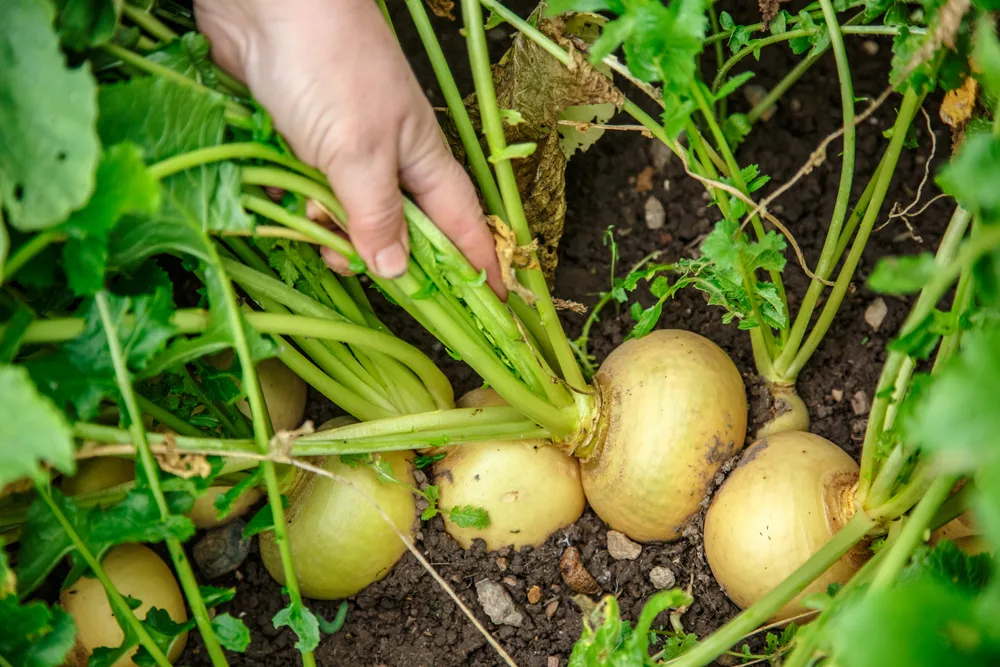
Turnips may not be the most popular garden cultivar today but this ancient root vegetable is certainly worth some space in the early spring plot.
Ready from seed to harvest in about 60 days, you can enjoy the spicy turnip greens after the first month of growth. These leafy tops taste similar to mustard greens and are packed with vitamins and minerals.
At the two month mark, harvest younger turnip roots for a crunchy and sweet vegetable with a flavor that blends cabbage with radish. Wait three months to harvest and turnips taste more like potatoes, becoming sweeter when cooked.
Turnip seeds can germinate in soils as low in temperature as 40°F (5°C). Sprouts will come up much more quickly, however, in soil that has warmed to 59°F (15°C).
Plant turnip seeds a ½ inch deep, 1 inch apart, with at least 12 inches between rows.
When turnip seedlings are 4 inches high, thin them to 4 to 6 inches apart.

Get the famous Rural Sprout newsletter delivered to your inbox.
Including Sunday ramblings from our editor, Tracey, as well as “What’s Up Wednesday” our roundup of what’s in season and new article updates and alerts.

